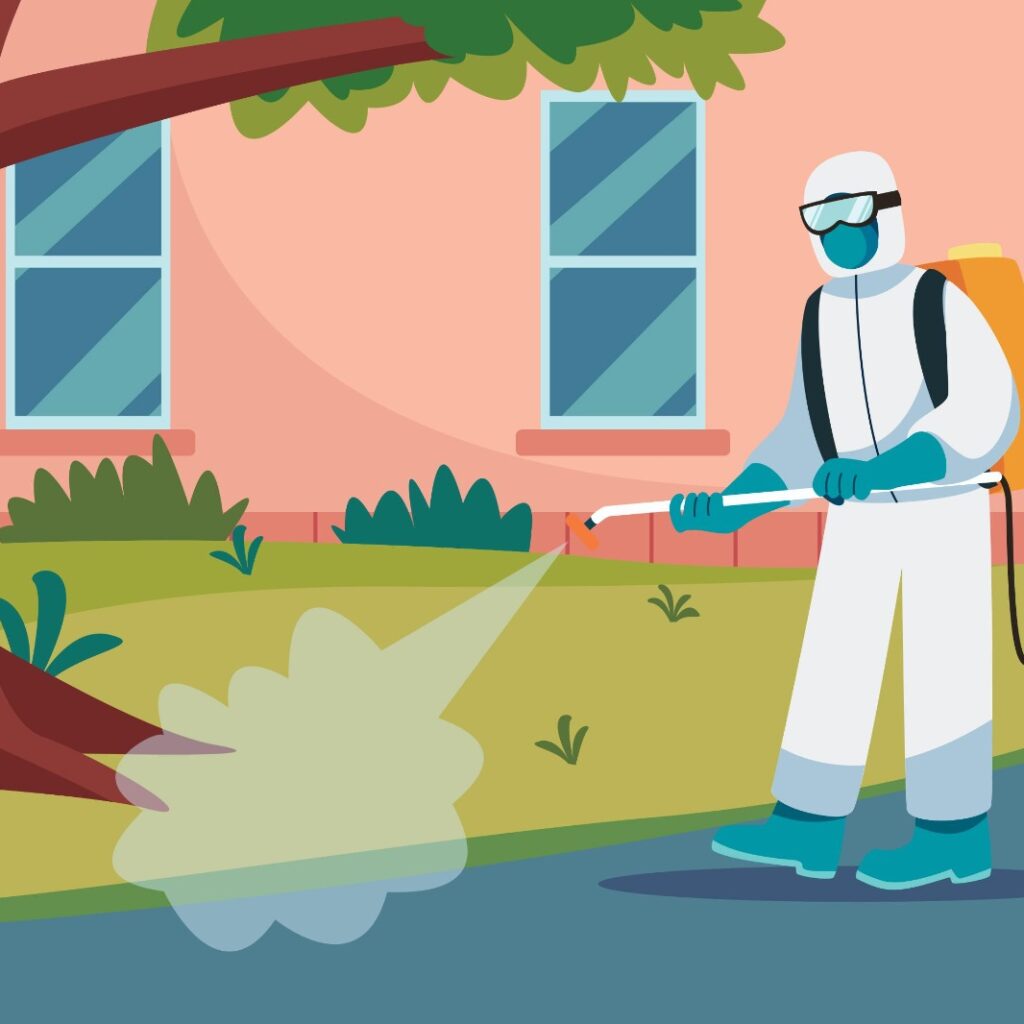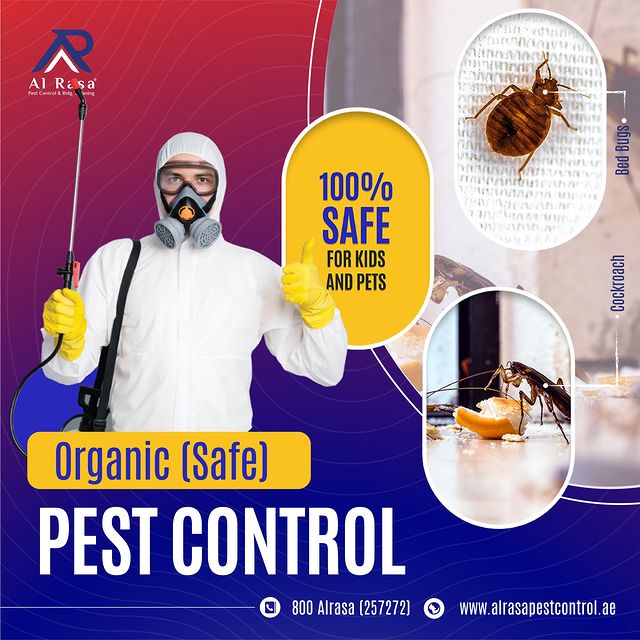Maintaining a clean and healthy home is a top priority for every homeowner. However, no matter how diligent we are in our cleaning routines, there are often unwelcome visitors that manage to find their way into our living spaces. Yes, we’re talking about pests – those tiny creatures that can wreak havoc and turn our tranquil homes into a battleground. Pest control plays a crucial role in ensuring that our homes remain free from these intruders and that our families stay safe.
In this , we will delve into the world of common household pests and explore the potential dangers they pose. By understanding their habits and vulnerabilities, we can develop effective strategies to keep them at bay. So, let’s roll up our sleeves and embark on a journey to discover the top ten common household pests and learn how to keep them away.
Household pests come in various shapes and sizes, and each poses unique challenges. From insects to rodents, these unwanted guests can cause a range of issues, including property damage, health risks, and emotional distress. Whether it’s the creepy crawlies that invade our kitchens or the critters that invade our attics, these pests can disrupt our daily lives and compromise the sanctity of our homes.
Common Household Pests :-
In this comprehensive guide, we will explore the ten most common household pests, shedding light on their behavior, habitats, and potential dangers. By gaining a deeper understanding of these pests, we can implement preventive measures and take appropriate action to keep our homes pest-free.
Cockroaches:-
These are one of the most common household pests that can send shivers down anyone’s spine. These resilient creatures are not only unsightly but also carry various diseases and allergens. Identifying them is crucial in order to implement effective prevention and control measures. Cockroaches are usually reddish-brown or dark brown in colour and have flat oval bodies with long antennae. They are nocturnal insects and tend to hide in dark, warm, and moist areas during the day, such as cracks, crevices, and kitchen cabinets.
To keep cockroaches away from your home, it is essential to take proactive steps. Start by sealing any cracks or gaps in walls, windows, and doors, as these tiny openings can serve as entry points for roaches. Pay close attention to areas near pipes, as they are common hiding spots. Additionally, eliminate all potential food sources by keeping your kitchen clean and storing food in airtight containers. Be sure to wipe down countertops, sweep the floor, and promptly clean up any spills or crumbs. Proper sanitation is crucial as cockroaches are attracted to even the smallest food residues.
When it comes to controlling a cockroach infestation, various methods can be employed. Cockroach baits are one effective option as they contain slow-acting insecticides that the roaches carry back to their nests, thus eliminating the entire colony. Traps can also be used to catch individual cockroaches and monitor the extent of the infestation. However, if the problem persists or is particularly severe, it is advisable to seek professional pest control services in Dubai. Pest control professionals have the expertise and tools to effectively eliminate cockroaches and prevent their recurrence, ensuring a pest-free environment for you and your family.
Ants:-
There are various types of ants, including carpenter ants, pavement ants, and odorous house ants, each with its own nesting habits and preferences. Carpenter ants, for instance, prefer to build their nests in damp wood, while pavement ants are often found near sidewalks or driveways. Understanding the nesting habits of different ant species can help in implementing targeted prevention and control measures.
To keep ants away from your home, it is crucial to seal any entry points they may use to gain access. Check for cracks in walls, windows, and doors, and seal them with caulk or weatherstripping. Keep in mind that ants can enter through even the tiniest gaps, so thorough inspection is necessary. Additionally, store food in sealed containers to eliminate potential food sources. Clean up spills promptly and keep countertops and floors free of crumbs. Ants are attracted to sugary and greasy substances, so pay extra attention to sweet spills and properly dispose of any food waste.
When it comes to controlling an ant infestation, there are several options available. Natural remedies like using vinegar, lemon juice, or peppermint oil can help deter ants from entering your home. Placing bait stations near ant trails can also be effective, as the ants carry the bait back to the colony, eventually eliminating it. Insecticidal sprays can be used for direct treatment of ant trails or nests, but they should be used with caution and according to the instructions provided. It is important to note that if the infestation is severe or persists despite your efforts, seeking professional pest control services may be necessary.
Rodents (Mice and Rats):-
Rodents, including mice and rats, are among the most common household pests that can cause significant problems if left unchecked. The presence of droppings, gnaw marks on furniture and wires, and a distinct musty odour are common indicators of a rodent problem. These critters not only contaminate food and surfaces with their droppings but can also cause structural damage by chewing through walls and electrical wires, posing a fire hazard. Moreover, rodents are known carriers of various diseases, making it essential to keep them away from our homes.
To prevent rodent infestation, it’s important to seal any openings or cracks through which these pests can enter your home. Mice can squeeze through tiny gaps, so it’s crucial to inspect the exterior of your house for potential entry points and seal them using caulk, steel wool, or other appropriate materials. Additionally, maintaining proper food storage is essential in deterring rodents. Store food in airtight containers and ensure that pet food is not left out overnight. Regularly cleaning your home and eliminating clutter can also help reduce potential hiding spots and food sources for rodents.
When it comes to controlling rodent populations, there are several methods to consider. Traditional snap traps can be effective, especially when baited with peanut butter or cheese. Make sure to place traps in areas where rodent activity is evident, such as near droppings or gnaw marks. Alternatively, electronic traps that deliver a lethal electric shock are also available. Using rodent repellents, such as peppermint oil or ultrasonic devices, can provide some degree of deterrence. For severe infestations or persistent rodent problems, it’s advisable to seek professional extermination services. Pest control experts have the knowledge and tools to safely and effectively eliminate rodent populations from your home.
Bed Bugs:-
One of the most dreaded household pests, bed bugs, can turn your peaceful sleep into a nightmare. Bed bugs are commonly found in areas where people sleep or rest, such as beds, mattresses, and upholstered furniture. To keep them at bay, regular inspections of these areas are essential. Take the time to examine your beds and furniture for any signs of bed bug activity, including dark spots or stains on the bedding, moulted skins, or live bugs. Additionally, it is advisable to wash your bedding at high temperatures, preferably above 130°F (54°C), as bed bugs cannot survive such extreme heat. This simple preventive measure can significantly reduce the risk of infestation.
If you find yourself faced with a bed bug infestation, there are effective control methods that can help eliminate these pests. One approach is to vacuum thoroughly, paying close attention to cracks, crevices, and seams where bed bugs tend to hide. Another method is steam treatment, which involves using a steamer to expose the bugs to high temperatures, effectively killing them. However, for severe infestations, it is recommended to seek professional pest control measures. Pest control professionals have access to specialized treatments and techniques that can effectively eradicate bed bugs. They may use insecticides or heat treatments to ensure complete elimination of the infestation.
Termites:-
Termites, often referred to as silent destroyers, can wreak havoc on your home if left unchecked. These tiny insects have the ability to cause extensive structural damage, leading to costly repairs. One of the most common signs of termite infestation is the presence of mud tubes on walls or wooden surfaces. These tubes serve as their passageways and protect them from predators. Additionally, discarded wings near doors or windows may indicate the presence of a termite colony nearby. If you notice any of these signs, it’s important to act promptly.
To prevent termite infestation, it’s essential to address moisture issues in and around your home. Termites thrive in damp environments, so be sure to fix any leaky pipes, faucets, or roof leaks. Ensure proper ventilation in your basement and crawl spaces, as moisture buildup can attract these pests. Remove any wood debris, such as logs or stumps, from your property, as they can serve as termite food sources. In terms of control methods, several options are available. Liquid termiticides can be applied to the soil surrounding your home’s foundation to create a barrier against termites. Baiting systems are another effective solution, as they attract termites and eliminate entire colonies.
Spiders:-
While most spiders are harmless and even beneficial as they prey on other insects, their presence can still be unsettling. Common household spiders like the cellar spider, cobweb spider, and wolf spider tend to seek shelter in dark and undisturbed areas such as basements, attics, and closets.
Regular cleaning is key to spider prevention. Spiders are attracted to dusty and cluttered spaces, so keeping your home clean and tidy is essential. Vacuuming regularly not only removes cobwebs but also eliminates any insects that might serve as a food source for spiders. Sealing cracks and gaps in windows, doors, and walls can also prevent spiders from entering your home. Additionally, removing clutter such as stacked boxes and piles of newspapers will eliminate potential hiding spots for spiders. When it comes to controlling spiders, there are several methods you can try. Natural repellents like essential oils can also be used to deter spiders. Peppermint, tea tree, and lavender oils are known to repel these arachnids. Simply dilute a few drops of the oil with water and spray it in areas where spiders are likely to reside.
Mosquitoes:-
Those pesky bloodsuckers not only ruin our outdoor activities but also pose significant health risks. These tiny insects are known carriers of diseases such as malaria, dengue fever, and Zika virus. Understanding their breeding grounds is crucial in preventing their proliferation. Mosquitoes breed in stagnant water, so it’s essential to remove any potential breeding sites around the house, such as empty containers, clogged gutters, or bird baths. Installing screens on windows and doors can help prevent these insects from entering our homes. Wearing protective clothing, such as long sleeves and pants, can also minimise the chances of mosquito bites, especially when spending time outdoors during peak mosquito activity times.
If preventive measures alone are not sufficient, there are various control methods available to combat mosquito infestations. Mosquito traps can be strategically placed to attract and capture these pests, reducing their numbers. Additionally, using larvicide treatments in standing water that cannot be eliminated, such as ponds or rain barrels, can prevent mosquito larvae from maturing into adults. It is important to follow the instructions provided with these treatments and use them safely and responsibly.
Flies:-
They come in different types, each with its own preferences when it comes to their preferred environments. Fruit flies are attracted to overripe fruits and vegetables, while house flies are often found near decaying organic matter. Understanding their behaviour and taking preventive measures can help keep these unwanted guests at bay.
It’s crucial to tackle the factors that attract them in the first place. Proper garbage disposal is essential, as flies are attracted to the smell of rotting food. Make sure to seal garbage cans tightly and empty them regularly. Additionally, it’s important to seal entry points such as cracks in doors and windows to prevent flies from entering your home. Keeping food covered is another effective preventive measure, as flies are drawn to exposed food. Using mesh screens on windows and doors can also help keep them out.
Flypaper is a simple yet effective solution that can be hung in areas where flies are commonly seen. The sticky surface of the paper traps flies when they come into contact with it. Insecticides can also be used to eliminate flies, but it’s important to choose products that are safe for indoor use and follow the instructions carefully. Another option is ultraviolet light traps, which attract flies with their light and then trap them inside. These traps can be placed in areas where flies are frequently present, such as kitchens or dining areas.
Silverfish:-
Silverfish are small, wingless insects that are commonly found in households. They are known for their silvery-gray appearance and their ability to move quickly. Despite their harmless nature to humans, silverfish can cause damage to various household items. They are attracted to damp and humid environments, which makes bathrooms and basements their preferred dwelling places. These pests can feed on various materials such as paper, glue, fabrics, and even wallpaper, leading to significant damage if left unchecked.
To prevent silverfish infestations, it is crucial to address the underlying causes that attract them. Firstly, reducing humidity levels in the house is essential. This can be achieved by using dehumidifiers, ensuring proper ventilation, and fixing any leaks or moisture issues. Secondly, sealing cracks and crevices in walls and floors can prevent silverfish from entering the house. Paying attention to areas where pipes and cables enter the house is particularly important. Lastly, storing items in airtight containers can limit silverfish access to potential food sources and nesting sites.
If silverfish are already present in the house, there are several control methods that can be employed. One effective method is using boric acid, which acts as a desiccant and dehydrates the pests. Applying boric acid in areas where silverfish are commonly found, such as behind appliances or in dark corners, can help eliminate them. Additionally, placing traps, such as sticky traps or homemade traps made with a mixture of flour, water, and boric acid, can catch silverfish and reduce their population.
Conclusion:-
It is crucial to prioritise pest prevention in order to maintain a healthy and comfortable home environment. As we have discussed throughout this blog, common household pests can wreak havoc on our living spaces, causing damage to property and posing health risks to residents. By implementing preventive measures such as keeping the home clean, sealing entry points, and eliminating potential food and water sources, we can significantly reduce the likelihood of infestations. Additionally, early detection plays a vital role in preventing pests from establishing a foothold in our homes.
However, if the situation gets out of hand or requires professional expertise, it is advisable to seek the assistance of a reputable pest control company in Dubai. Their knowledge, experience, and specialised treatments can effectively address the issue and provide long-term solutions for a pest-free home. Remember, by taking proactive steps and staying vigilant, we can keep those pesky household pests at bay and enjoy a safe and comfortable living environment for ourselves and our families!




